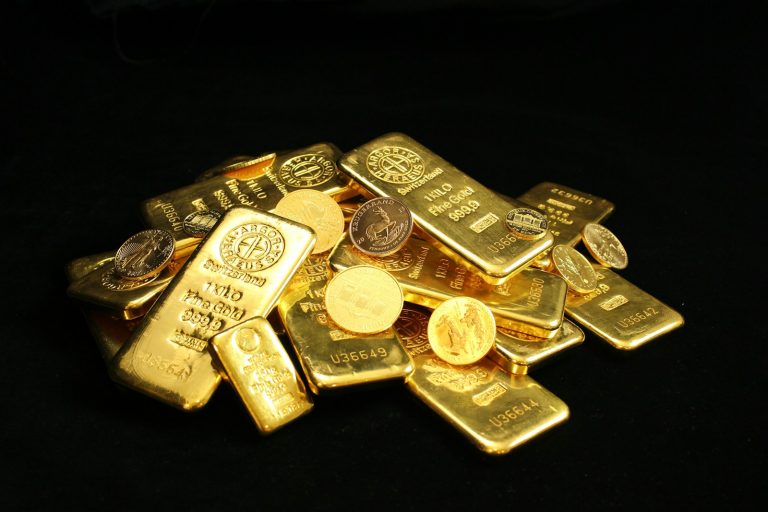Precious metal coins are a well-known investment item — and bars comprising metals such as gold and silver can also be highly sought-after assets, according to Kevin DeMeritt, founder and chairman of Lear Capital.
In March, Lear Capital purchased a rare 80.39-ounce gold bar that was assayed by Léo Matthey, a descendent of the famous Matthey assaying family that helped found precious metal analysis provider Johnson Matthey in 1933. Lear Capital has priced the bar at $197,000, based on today’s current gold prices.
The item’s assessment date gives it an interesting historical context.
When the U.S. operated on a gold standard, the Federal Reserve was required to hold gold that equated to 40% of the value of the U.S. dollars that were issued, and to be able to convert dollars into gold at a fixed price of $20.67 per ounce.
Former U.S. President Franklin D. Roosevelt enacted policies in 1933 and 1934 that restricted the private use of gold, requiring Americans to exchange gold items they owned with a value of more than $100 for paper currency.
The move was in response to the financial crisis of 1933, which led to large amounts of gold streaming from the Federal Reserve’s supply, due to a rising preference to hold gold instead of bank deposits or paper currency. This affected the Federal Reserve’s ability to convert currency to gold.
Some of that gold, according to the Federal Reserve, went to foreign nations that were concerned about the U.S. dollar becoming devalued. In March 1933, the drain on reserves led to the Federal Reserve Bank of New York no longer being able to convert currency to physical gold, prompting the president to declare a national bank holiday, a week during which no banks were open.
“This is a rare piece of history,” Kevin DeMeritt says. “We’re giving an incredibly good price on this bar, but would love to sell it to someone who appreciates the history and wants to hold on to it for its historic value.”
A Gold-Infused Glimpse of the Past
Gold bars like the one Lear Capital obtained can feature several compelling elements.
They may be marked with a serial number; Lear Capital’s bar, for example, bears the number 33, indicating it was the 33rd bar the manufacturer poured. Some also contain information about the company that produced the bar. Lear’s is stamped with a pine tree, which is the manufacturer’s logo, according to Kevin DeMeritt.
Bars also often come with paperwork that provides additional details. The certificate of authenticity for Lear’s bar, for instance, lists its weight in grams — 2,500.5 — as well as the name and signature of the essayeur juré, or sworn tester, Léo Matthey.
George Matthey joined in 1838 as an apprentice and eventually became a partner in the business, which was appointed to be an assayer to the Bank of England in 1852. Although the company has since sold its gold and silver refining business, items that were appraised by one of its employees hold a unique place in gold’s history.
While the bar’s purity level is listed as 1,000, Lear Capital says today’s more precise technology would likely place the purity at about 0.999. That level is above the required minimum fineness, 0.995, gold assets must possess to be able to be included in a precious metals-backed individual retirement account.
The process involved in preparing to hold gold in an IRA is a fairly simple process. After setting up the account, you can directly deposit funds or roll some over from another eligible account, and then use those funds to purchase physical precious metals. Those metals need to be stored remotely in an IRS-approved facility for you to receive the associated tax benefits with the account.
“If you had a 401(k) or an IRA, and you’d like to take a portion of that and move it over to a self-directed gold-backed IRA, you can do that,” Kevin DeMeritt explains. “[It] takes you about five, 10 minutes to put the paperwork together. You don’t have to [roll over] your whole IRA; you transfer any portion that you feel comfortable with.”
Fundamental Bar Components
Investors sometimes choose to purchase gold or other precious metal coins that have a historical connection, which can contribute to their appeal.
The American Gold Eagle coin, for instance, has been produced for more than three decades with different weights, denominations, designs and is one of the most sought-after varieties, according to Lear Capital — which says, “In the world of gold bullion coins, the American Gold Eagle is king.”
A collectible version of the bullion, American Eagle Gold Proof Coins, are produced in limited mintages in four sizes, ranging from one to one-tenth of an ounce.
Much like precious metal coins, gold bars can be of interest to collectors and investors because of both their precious metal content and history. Gold bars can also offer other benefits; they cost less to manufacture, CBS News says, than coins that feature involved designs, for instance.
Authenticity can be a key consideration when buying gold bars, according to CBS News — which advises looking for marks such as serial numbers on the bars that will help indicate their origin and a certificate of authenticity to confirm the purity and weight.
For investors who are interested in diversifying their portfolio beyond the typical stocks and bonds an IRA or 401(k) may contain, incorporating gold can potentially help balance out losses other more variable assets can produce, Kevin DeMeritt says.
“You need to look for that asset that’s going to give you the stability and offset the volatility from some of the other areas,” he says. “Gold has an inverse relationship to stocks and other types of assets. Diversification usually works out much, much better for people over the long term.”
